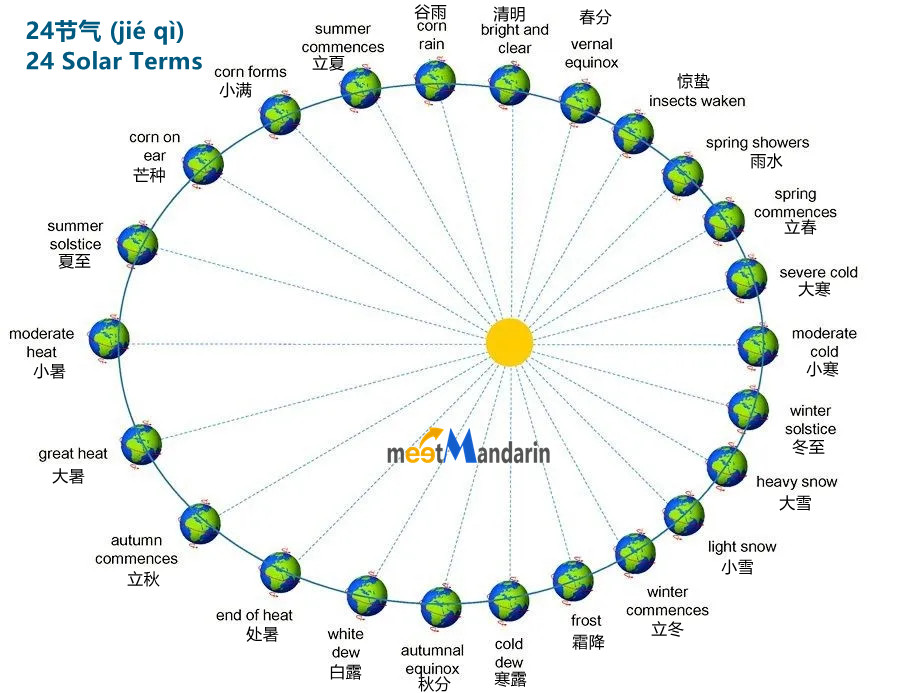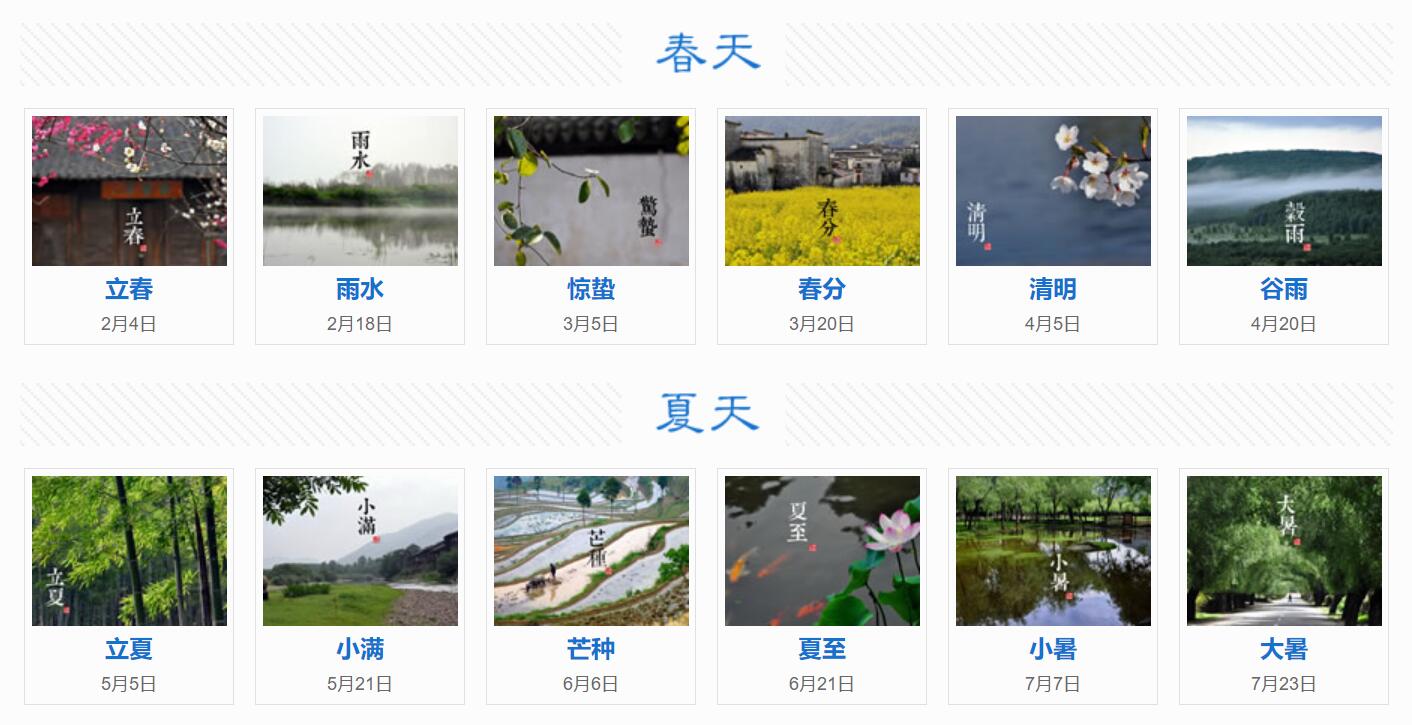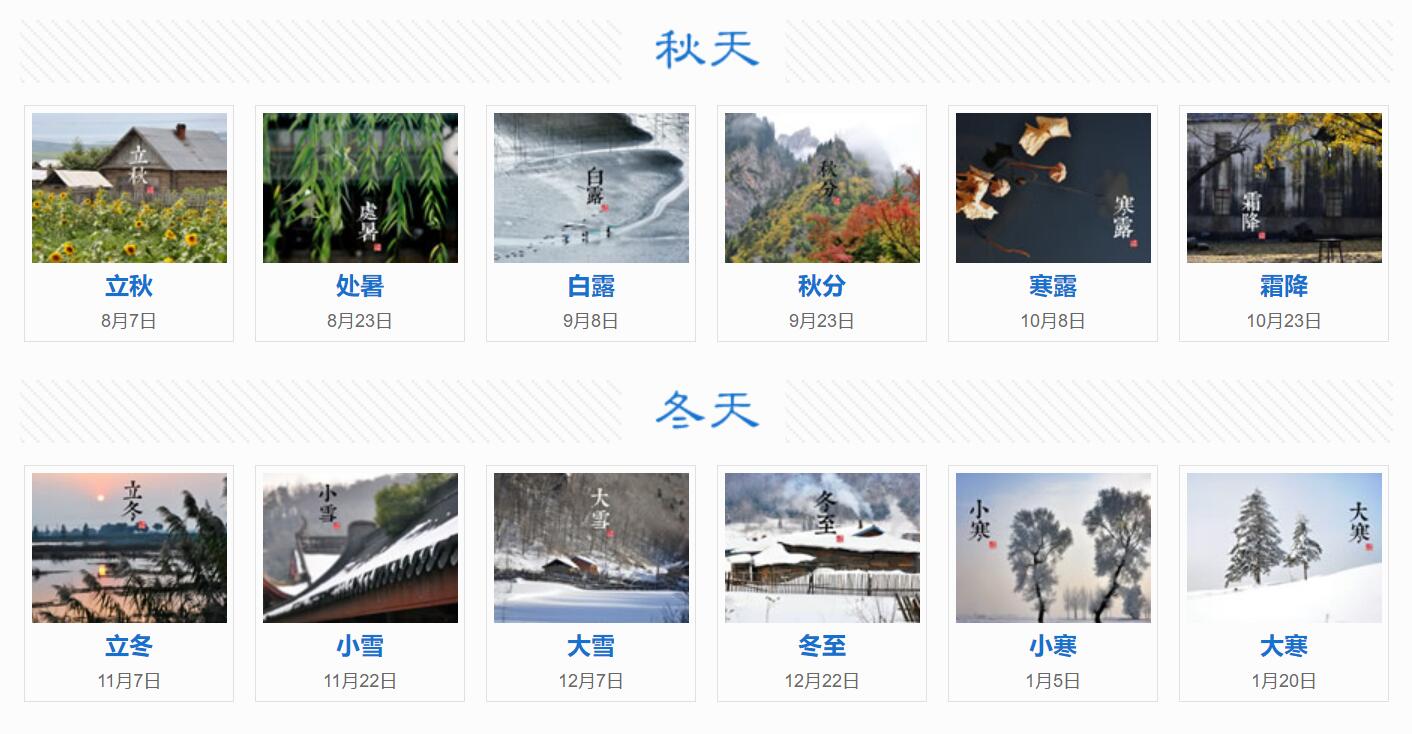Chinese 24 Solar Terms
The Chinese people divided a year into 24 segments based on the sun's position in the zodiac. Each segment is called a 节气 “jié qì”, solar term. 节 means “segment” in Chinese. 气 refers to the climate or the seasons.
There are 2 solar terms in each of the 12 months, with each segment lasting around 15 days. The 24 Solar Terms reflect the changes of the seasons and climate.

What are the 24 Solar Terms used for?
Honored as the Fifth Great Invention of China, the 24 Solar Terms are very important to the Chinese people. For example, they serve as a time-frame for agricultural activities in China. Actually, the influences of the ancient way of dividing time have gone beyond farming into the daily lives of the Chinese people, even their mindset.
Nowadays, Chinese people even regard some of the major Jie Qi as “small” festivals with some traditional celebrations.
For instance, 清明, the "Pure Brightness" is also marked as the tomb-sweeping day, when people pay respect to their lost ones.
Chinese eat Jiaozi in 冬至, the "Start of Winter". People believe those who don’t eat Jiaozi on this day will feel cold throughout the upcoming winter.
What and when are the 24 Solar Terms?


| 24 Solar Terms | Pinyin | Meaning |
|---|---|---|
| 立春 | lì chūn | Spring Commences |
| 雨水 | yǔ shuǐ | Spring Showers |
| 惊蛰 | jīnɡ zhé | Insects Waken |
| 春分 | chūn fēn | Vernal Equinox |
| 清明 | qīnɡ mínɡ | Bright and Clear |
| 谷雨 | ɡǔ yǔ | Corn Rain |
| 立夏 | lì xià | Summer Commences |
| 小满 | xiǎo mǎn | Corn Forms |
| 芒种 | Corn on ear | Grain in Ear |
| 夏至 | xià zhì | Summer Solstice |
| 小暑 | xiǎo shǔ | Moderate Heat |
| 大暑 | dà shǔ | Great Heat |
| 立秋 | lì qiū | Autumn Commences |
| 处暑 | chǔ shǔ | End of Heat |
| 白露 | bái lù | White Dew |
| 秋分 | qiū fēn | Autumn Equinox |
| 寒露 | hán lù | Cold Dew |
| 霜降 | shuānɡ jiànɡ | Frost |
| 立冬 | lì dōnɡ | Winter Commences |
| 小雪 | xiǎo xuě | Light Snow |
| 大雪 | dà xuě | Heavy Snow |
| 冬至 | dōnɡ zhì | Winter Solstice |
| 小寒 | xiǎo hán | Moderate Cold |
| 大寒 | dà hán | Severe Cold |